
Wideband Darlington gain blocks have become a workhorse for RF wireless and wireline applications. The broadband linearity and direct-coupled performance has found a multitude of commercial design-ins for base station pre-drivers, repeater-pole transceivers, fiber optic transceivers, CATV and instrumentation systems. One of the drawbacks of existing Darlington amplifier solutions, however, is the need for an external dropping resistor for setting and stabilizing the bias current of the amplifier. For adequate temperature and supply stability, an overhead voltage of roughly 2 to 3 V is required for robustness leading to inefficient operation of the amplifier from an 8 V supply. This presents a design challenge for newer system applications that have made 5 and 3 V supply voltages a standard for bias operation. Fortunately, Sirenza has developed a new family of 5 V InGaP supply solutions, the SBB amplifier series, in the popular SOT89 and SOT86 packages that can provide similar performance to its legacy SBA 8 V designs, but with improved operating robustness and RF efficiency.
Traditional Design Approach
Figure 1 shows the common Darlington feedback amplifier topology and illustrates its design application. The Darlington feedback amplifier is one of the most commonly used topologies in RF amplifier design and has been used by several commercial companies to provide broadband amplifier solutions.

Fig. 1 Conventional Darlington feedback amplifier (a) and a typical design application (b).
The application diagram illustrates the design employment of a typical InGaP-GaAs-based Darlington amplifier where an external resistor Rbias is integrated outside the package in order to set the bias current. To obtain an output 1 dB compression point (P1dB) of ~20 dBm, a device voltage Vd of ~5 V and bias current of ~80 mA is usually required. To set up a robust bias current that is insensitive to temperature and supply variations, a voltage drop of ~3 V is required about the Rbias resistor and requires a supply voltage of typically 8 V. This is the present bias solution for conventional medium power Darlington amplifiers. As illustrated by the current versus Vcc curves in Figure 2, the supply voltage may be reduced to 7 or 6 V for this conventional bias, but at the expense of bias stability over temperature and supply variations. The steeper slope of the current-voltage curves at the operating supply voltage of 6 V indicates greater bias instability compared to 8 V conventional operation. The skew about each center curve represents the bias sensitivity over temperature (–40° to +85°C). Lower supply operation produces greater temperature variation. Thus, excessive supply and temperature sensitivity can result in reliability and robustness issues at lower supply operation using the conventional approach.
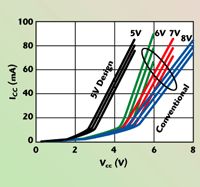
Fig. 2 Icc versus Vcc characteristics of the 5 V design vs. conventional approached.
5 V Supply Design
In order to operate at a lower supply voltage while providing equivalent RF performance and bias stability, a new Darlington feedback design has been developed, as shown in Figure 3. The unique topology has been filed with the US patent office and a patent is pending. The new design employs a bias topology, which allows the Darlington feedback amplifier to operate directly from a lower 5 V supply without the need for the Rbias resistor. This enables the new design to achieve similar RF performance to the conventional 8 V design, but with 35 percent less DC power consumption. One of the main challenges that is overcome with this new technique is to maintain the bias robustness over temperature and voltage supply variations at this lower 5 V supply voltage. Figure 2 compares the current-voltage characteristics of the new 5 V Sirenza design with respect to the conventional Darlington approach mentioned previously. The graph illustrates that smaller temperature variation is achieved with the lower 5 V design. Furthermore, it maintains reasonable supply variation sensitivity that is characteristic of the conventional higher voltage resistive bias designs.
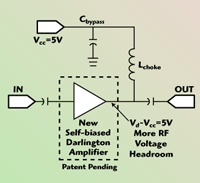
Fig. 3 Design application of the 5 V Darlington amplifier.
5 V SBB Gain Block Family
The new amplifier design topology is incorporated into Sirenza’s line of recently released 5 V supply InGaP SBB series amplifiers. These gain blocks all operate from a 5 V supply with no Rbias dropping resistor and are currently offered in the popular SOT89 package. The amplifiers are designed to address RF and IF amplifier applications where high gain and IP3 are required. Table 1 lists a specification summary of the SBB series products. The SBB 1089 and 2089 are designed for IF and CATV amplifier applications in the 50 to 500 MHz range where high IP3 of ~42 dBm and low noise figure of 2.8 to 3.3 dB are needed. The SBB 4089 and 5089 are general purpose wideband RF gain blocks that can serve applications between 50 MHz to 8 GHz. Figure 4 illustrates the broadband gain and return-loss response of the SBB-5089 amplifier, which has a gain of 20 dB and maintains a gain of 15 dB at 6 GHz. Figure 5 shows the bias current characteristics over temperature and supply variation. The bias current is regulated to within two percent over a –40° to +85°C ambient temperature and maintains good supply insensitivity similar to the conventional resistive self-bias Darlington gain blocks that operate from the higher 8 V supply. These excellent bias characteristics reflect the robustness of the new Darlington design employed in the SBB series. The corresponding gain response over temperature is given in Figure 6. At 2 GHz the gain varies by less than 1 dB across the –40° to +85°C temperature range. Other key RF performance parameters such as P1dB and output IP3 are also given in Figures 7 and 8. An output power greater than 20 dBm and an IP3 of 35 dBm are obtained at 1950 MHz at a nominal ambient temperature of 25°C.

Fig. 4 SBB-5089 wideband gain and return-loss response.
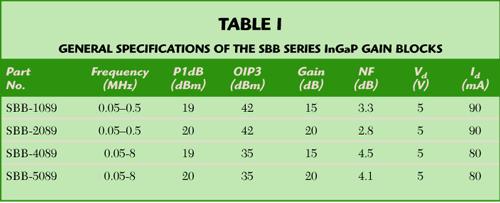
Table 2 gives a direct performance comparison between the new 5 V SBB-5089 and the conventional 8 V SBW-5089 and SBA-5089 designs. Generally, the 5 V SBB-5089 obtains similar or better performance to these 8 V supply designs while consuming 37 percent less total DC power. In particular, the 5 V SBB-5089 outperforms the 8 V SBW and SBA series designs in IP3 by over 2.5 dB at 850 MHz and 0.8 dB at 1950 MHz. The 5 V design also achieves 0.4 to 1 dB improvement in the 1 dB output compression while operating from a much lower 5 V supply.
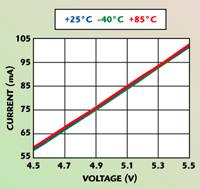
Fig. 5 SBB-5089 bias current characteristics over temperature and supply variation.
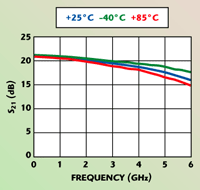
Fig. 6 SBB-5089 gain response over temperature.
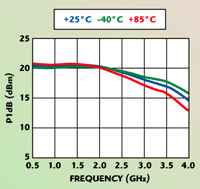
Fig. 7 SBB-5089 dB compression versus frequency.

Fig. 8 SBB-5089 output IP3 versus frequency.
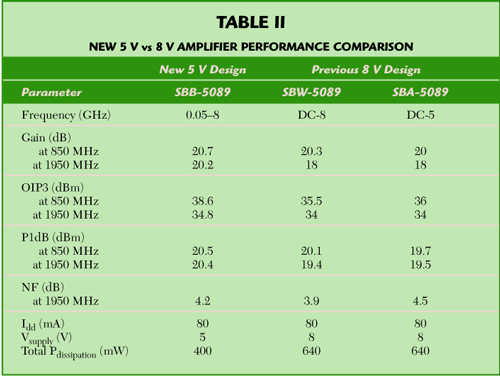
Conclusion
An innovative amplifier design has been developed that allows traditional medium power Darlington feedback amplifiers to operate directly from 5 V without the need for an external bias resistor. The patent-pending design has been applied to the Sirenza Microdevice 5 V InGaP SBB gain block product series. These products operate with 35 percent less DC power consumption than existing 8 V Darlington designs while providing more robust performance. The company is also applying this innovative Darlington self-bias technique to microwave frequency gain blocks up to 20 GHz as well as lower 3 to 3.3 V supply operated gain blocks to satisfy a variety of standard 5 and 3 to 3.3 V system applications.
Sirenza Microdevices,
Broomfield, CO
(800) 764-6642,
www.sirenza.com
